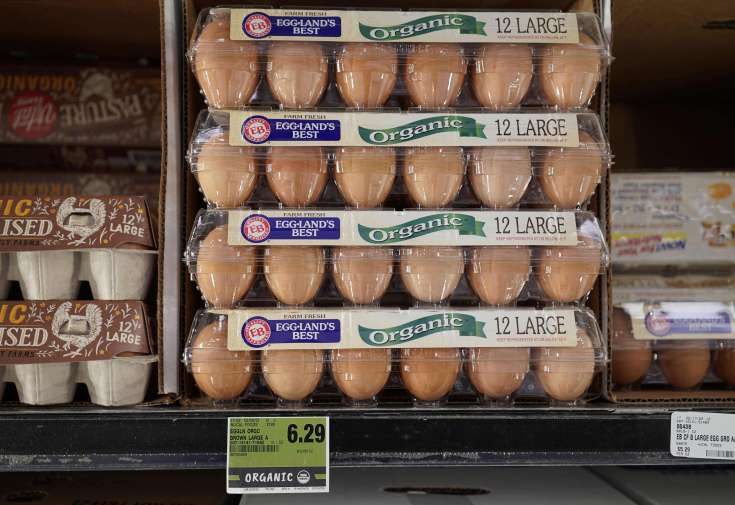Taylor Swift attends the 65th Grammy Awards on Feb. 5, 2023 in Los Angeles.
Jeff Kravitz | Filmmagic, Inc | Getty Images
This is an excerpt from the Personal Finance team’s weekly Twitter Space, “This week, your wallet.” Check out the latest episode here, and tune in every Friday at 11 a.m. ET.
Egg prices have entered the zeitgeist.
Comedian Trevor Noah told Taylor Swift at the Grammy Awards on Sunday that the pop star has “the best fans in the world,” subsequently asking if they can help reduce the high price of eggs.
“They’ll get on it,” Swift said.
Unfortunately, factors influencing egg prices at the grocery store are likely beyond the control of “Swifties.”
Here are three things to know about egg prices right now.
1. Yes, egg prices are at record highs
In December, the average consumer paid a record $4.25 for a dozen large Grade A eggs, according to monthly U.S. Bureau of Labor Statistics data. The price more than doubled from $1.79 a year earlier.
Egg prices rose faster than almost any other good or service in the U.S. economy in 2022.
2. Bird flu is the primary factor

3. Prices may soon recover — but it’s hard to know
Even before Noah asked Swift to intervene, there have been signs that price pressures are easing.
Wholesale egg prices — basically, the price supermarket chains and other stores pay to acquire their supply — have fallen significantly (by more than 50%) from their peak in mid-December.
There haven’t been new confirmed cases of bird flu among commercial table-egg farms since December, giving suppliers time to recover. Consumer demand has also declined as a sort of backlash against high prices, the U.S. Department of Agriculture said last week.
It typically takes several weeks for price movements in the wholesale market to flow to the retail market for consumers.
But there are reasons why it may take longer — perhaps months — for retail prices to drop noticeably, according to food economists. For one, demand generally rises leading up to Easter, which falls on April 9 this year.


